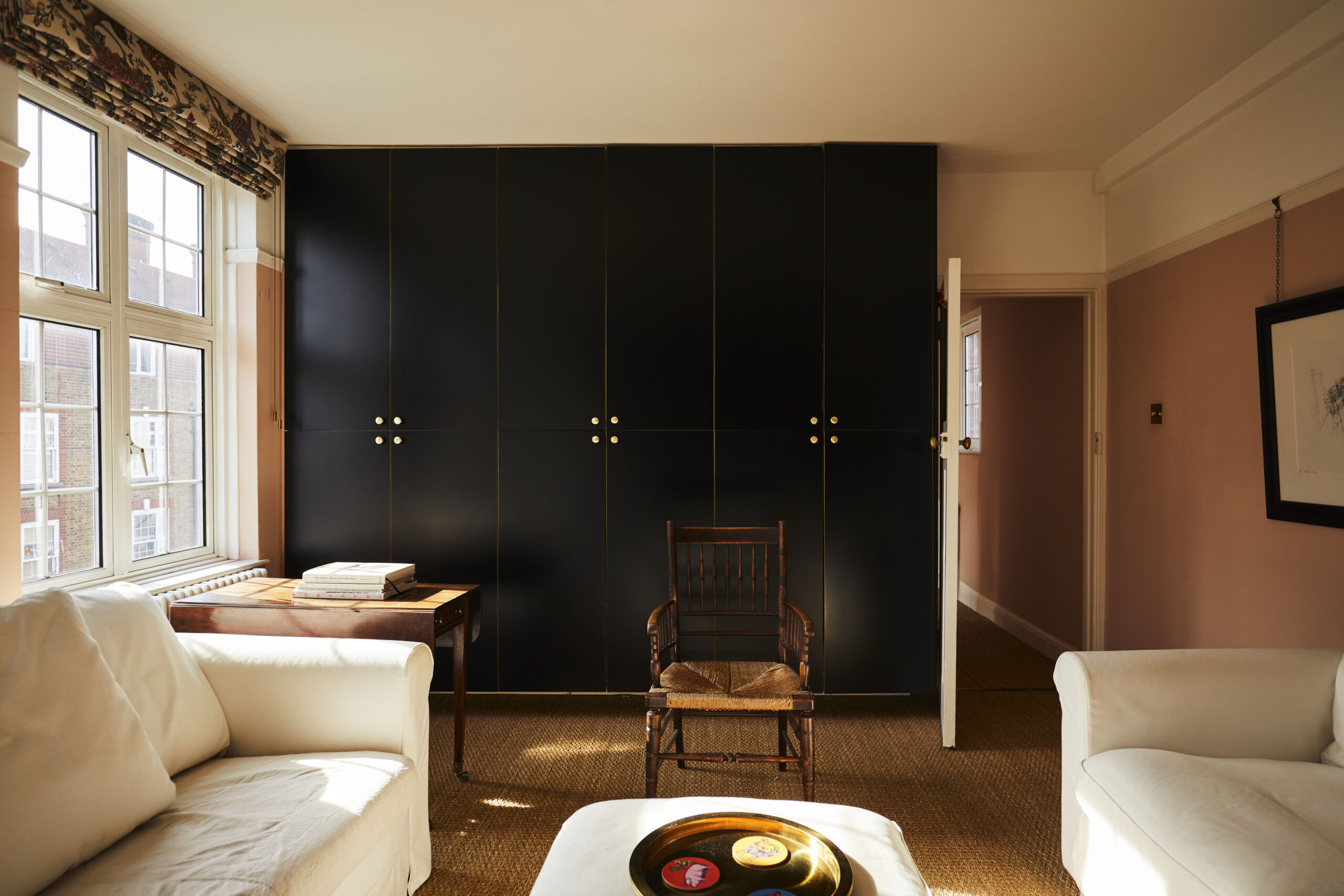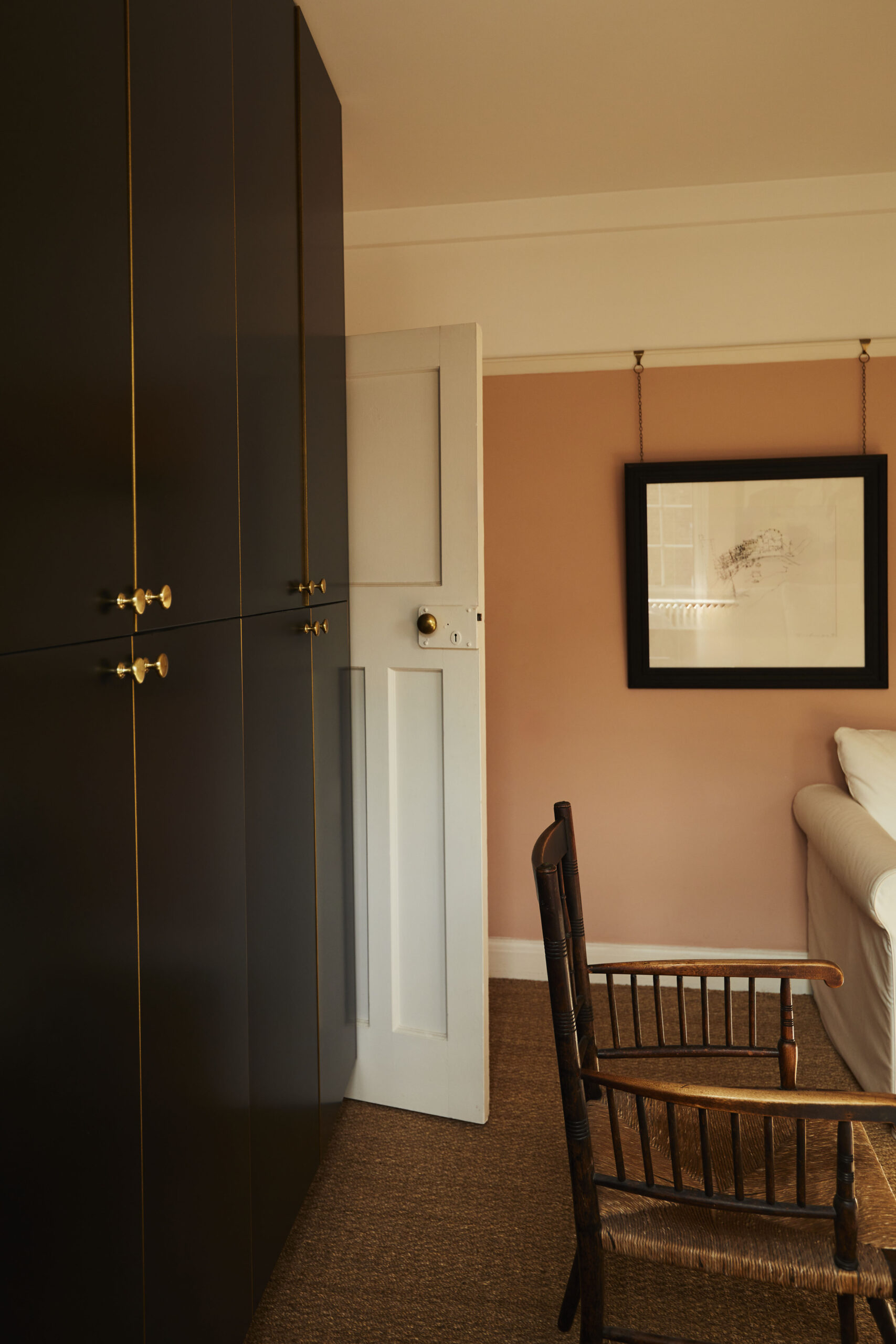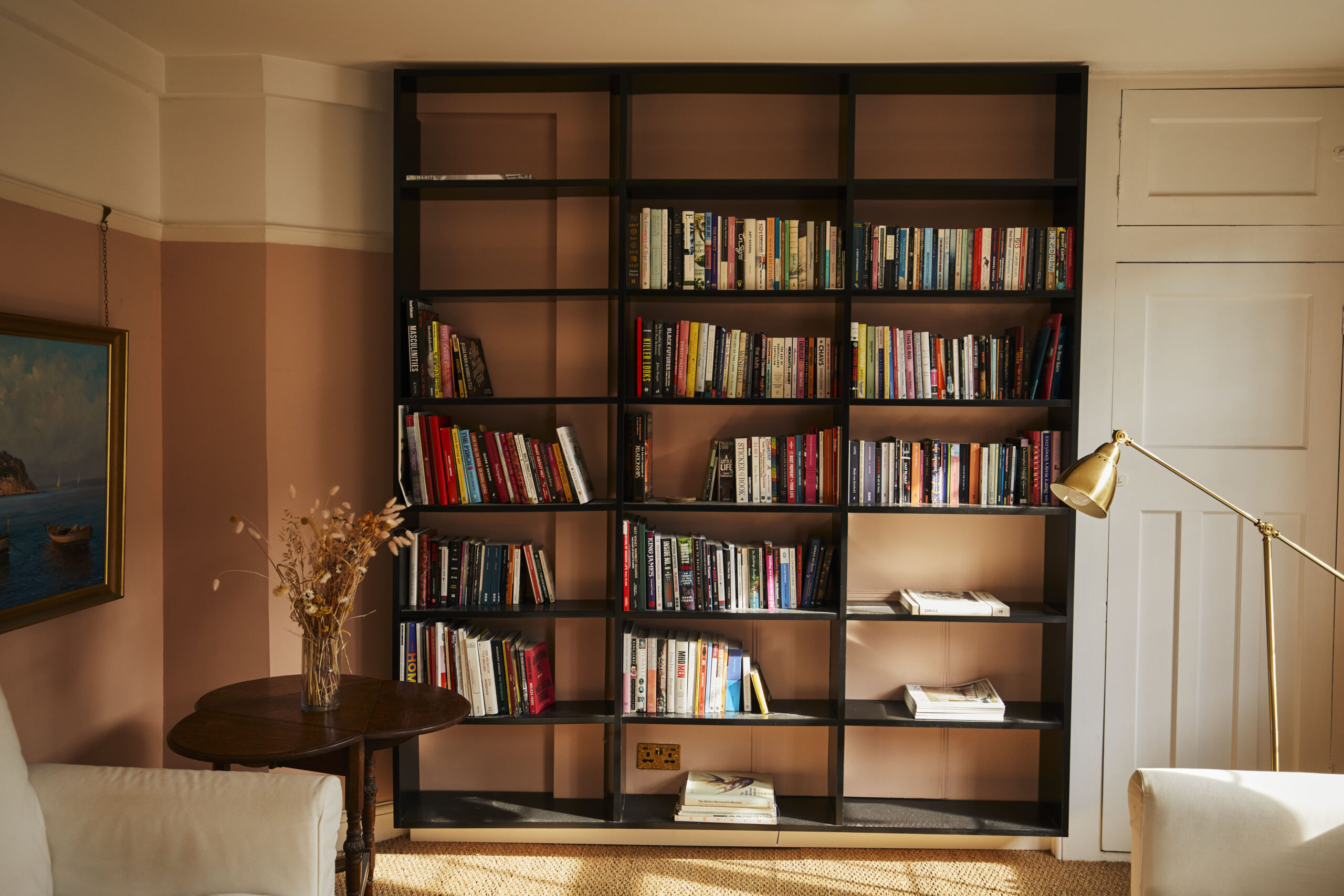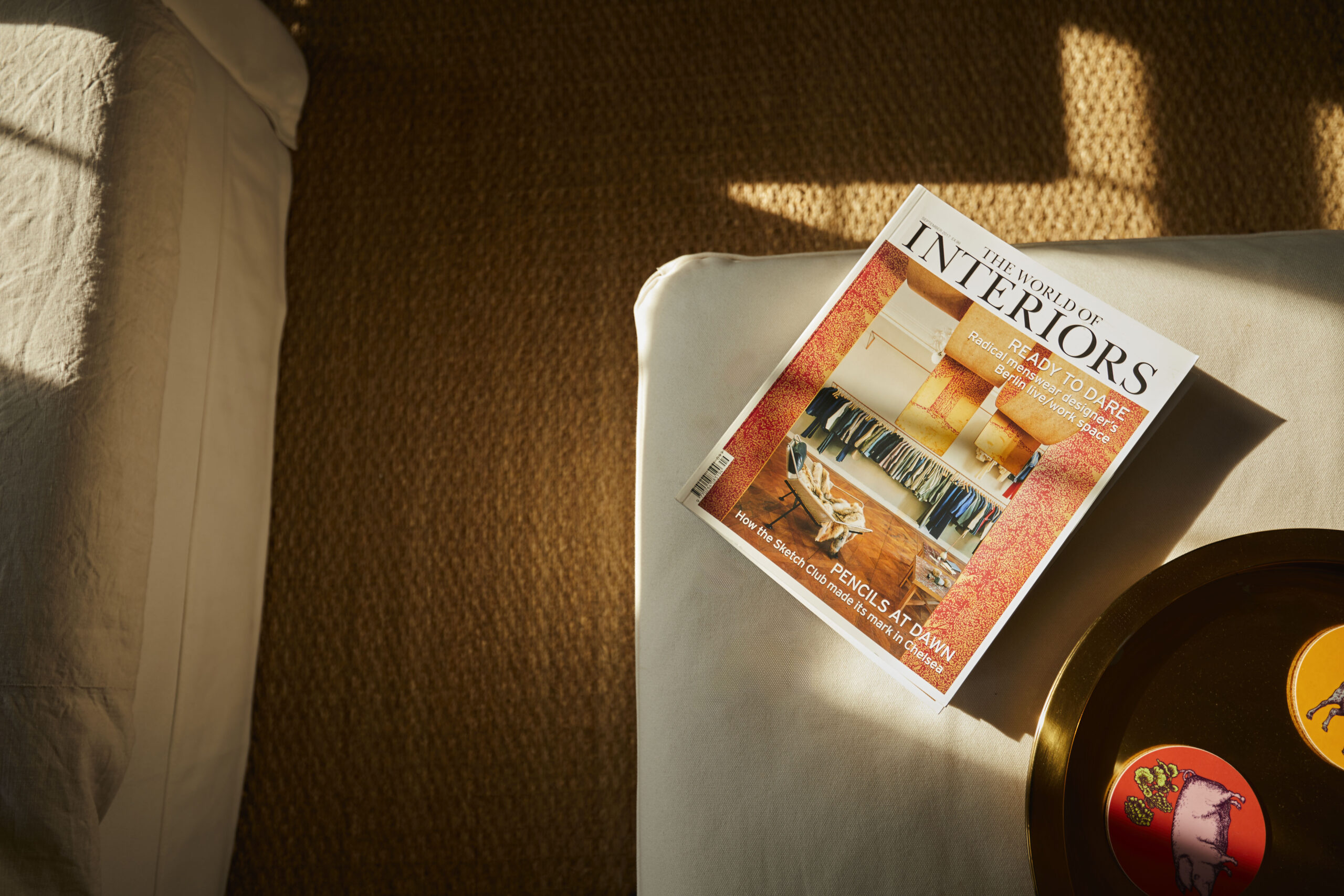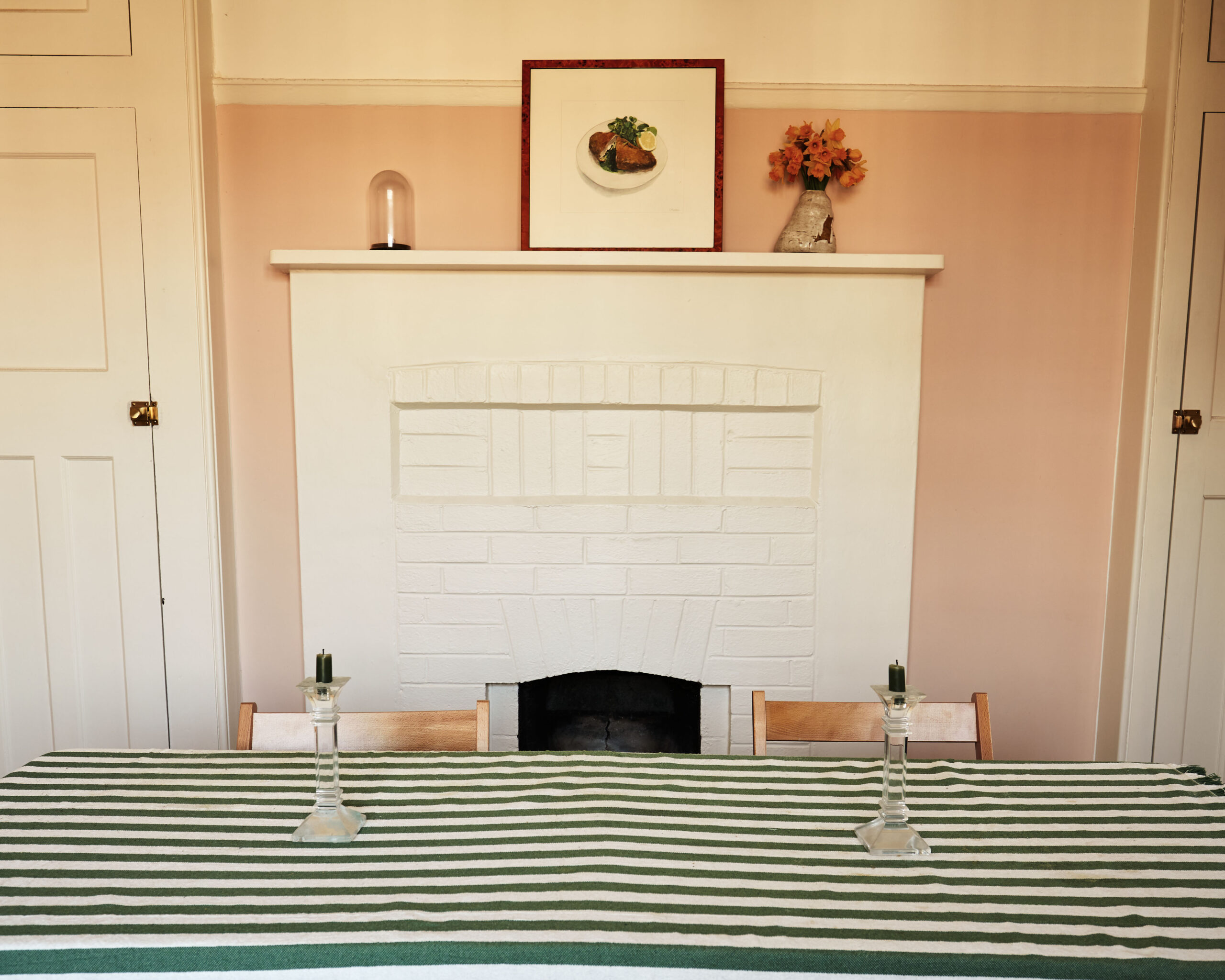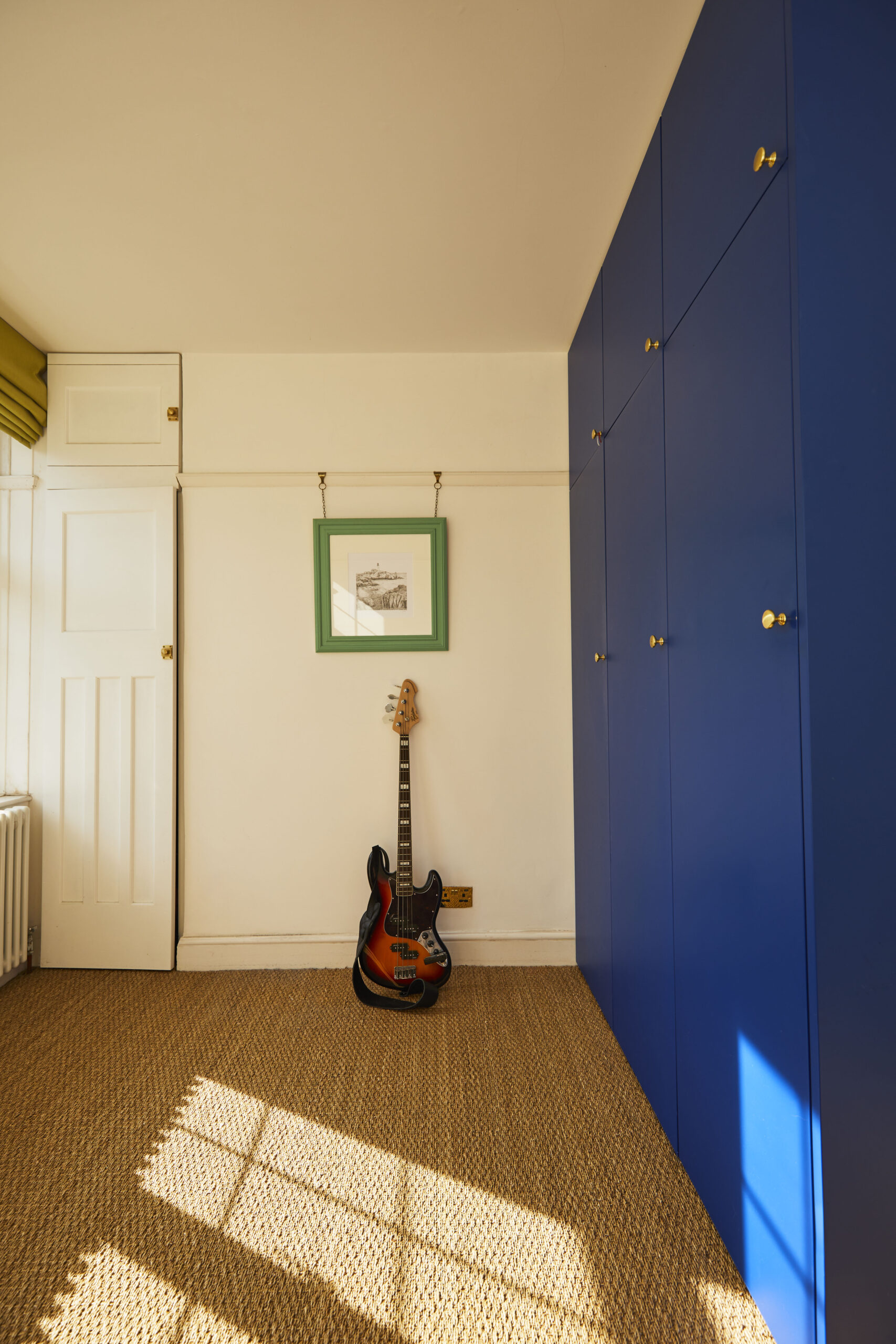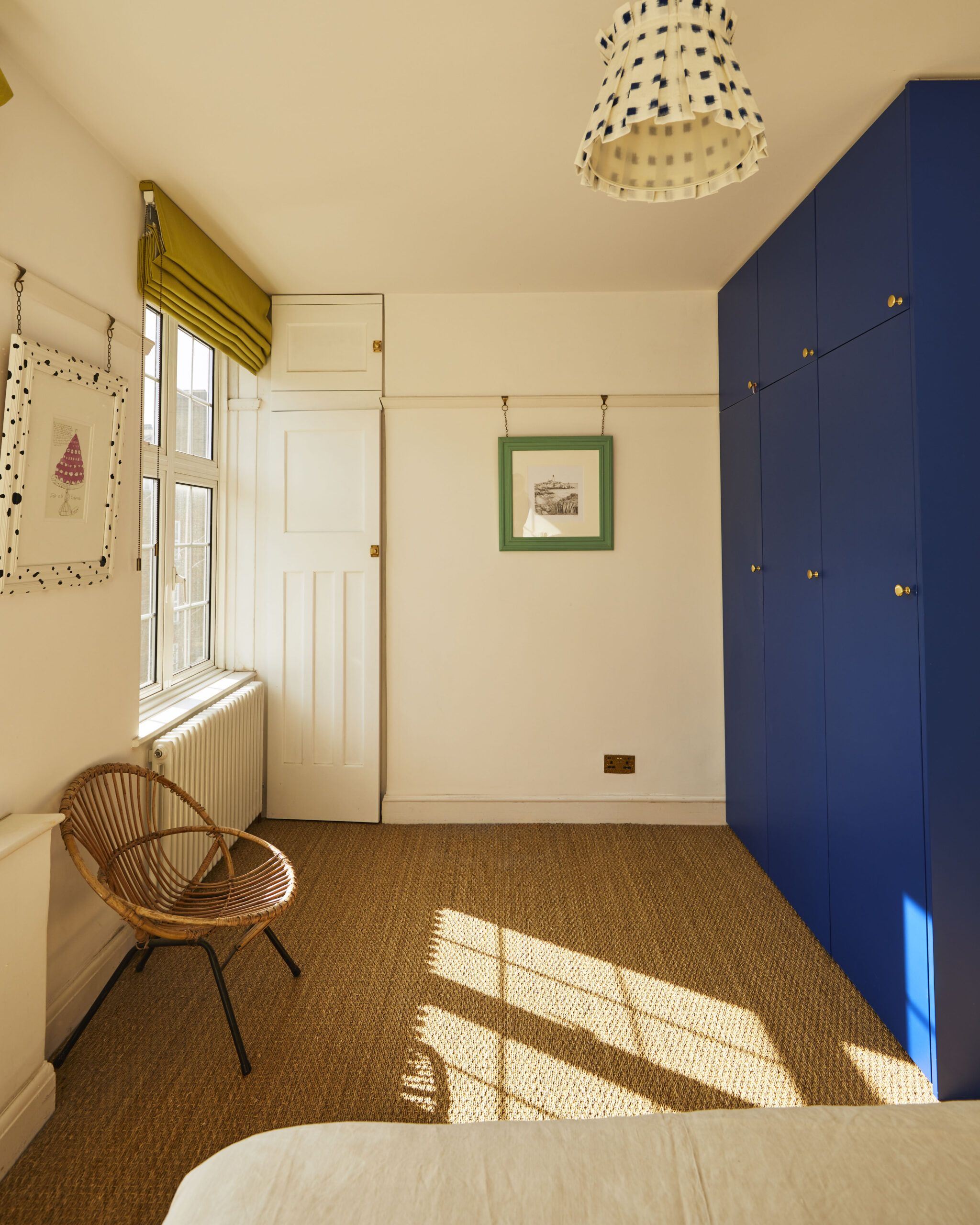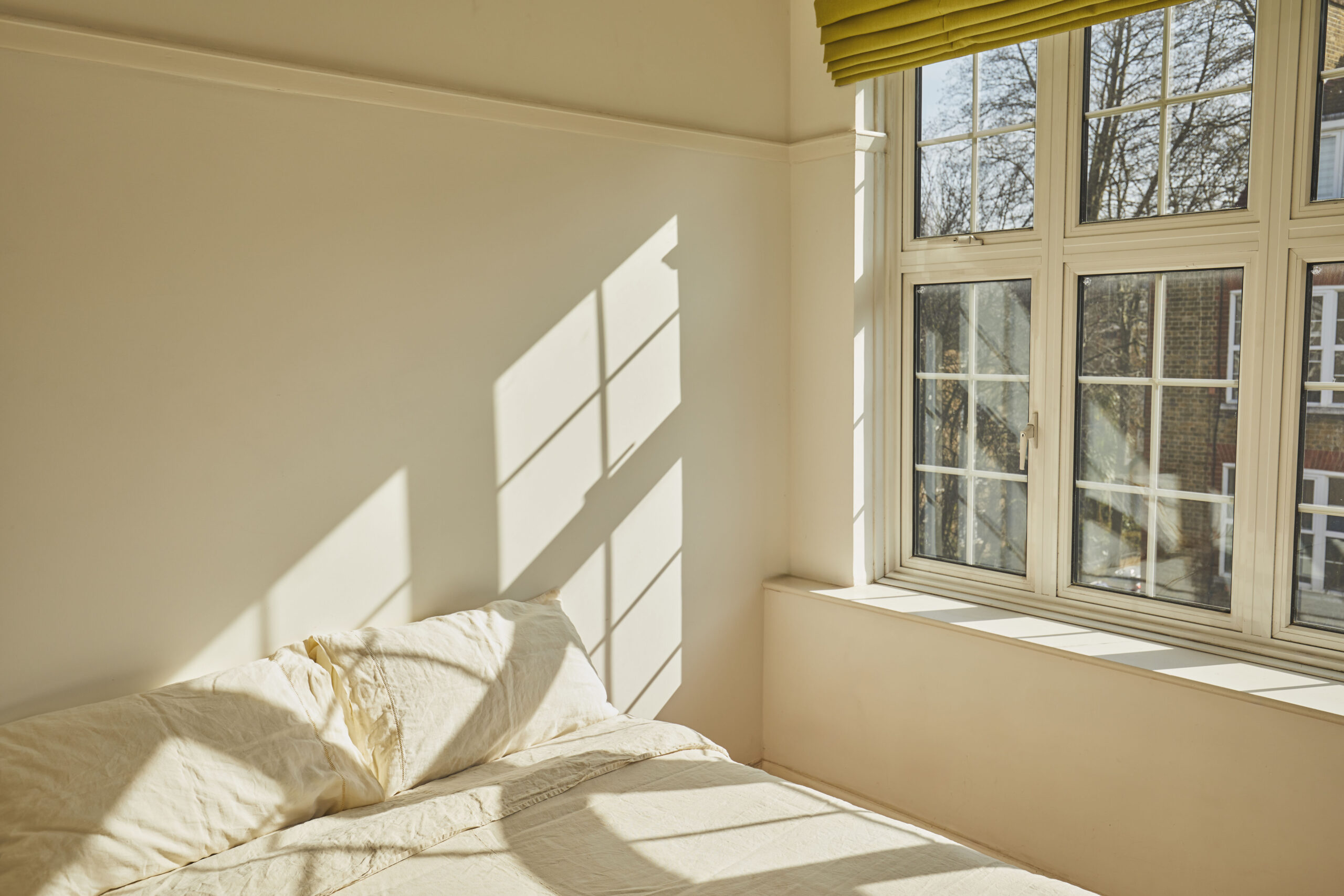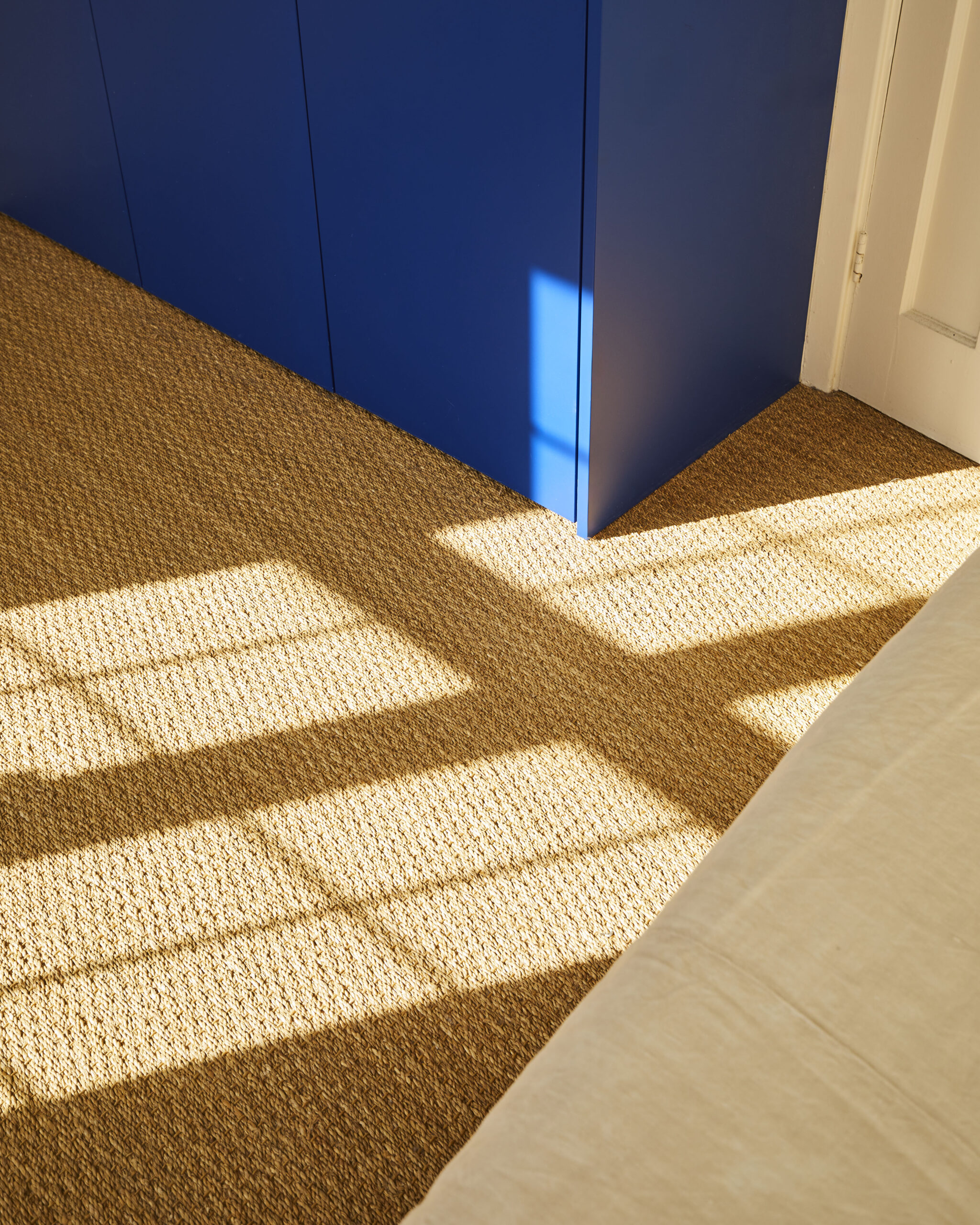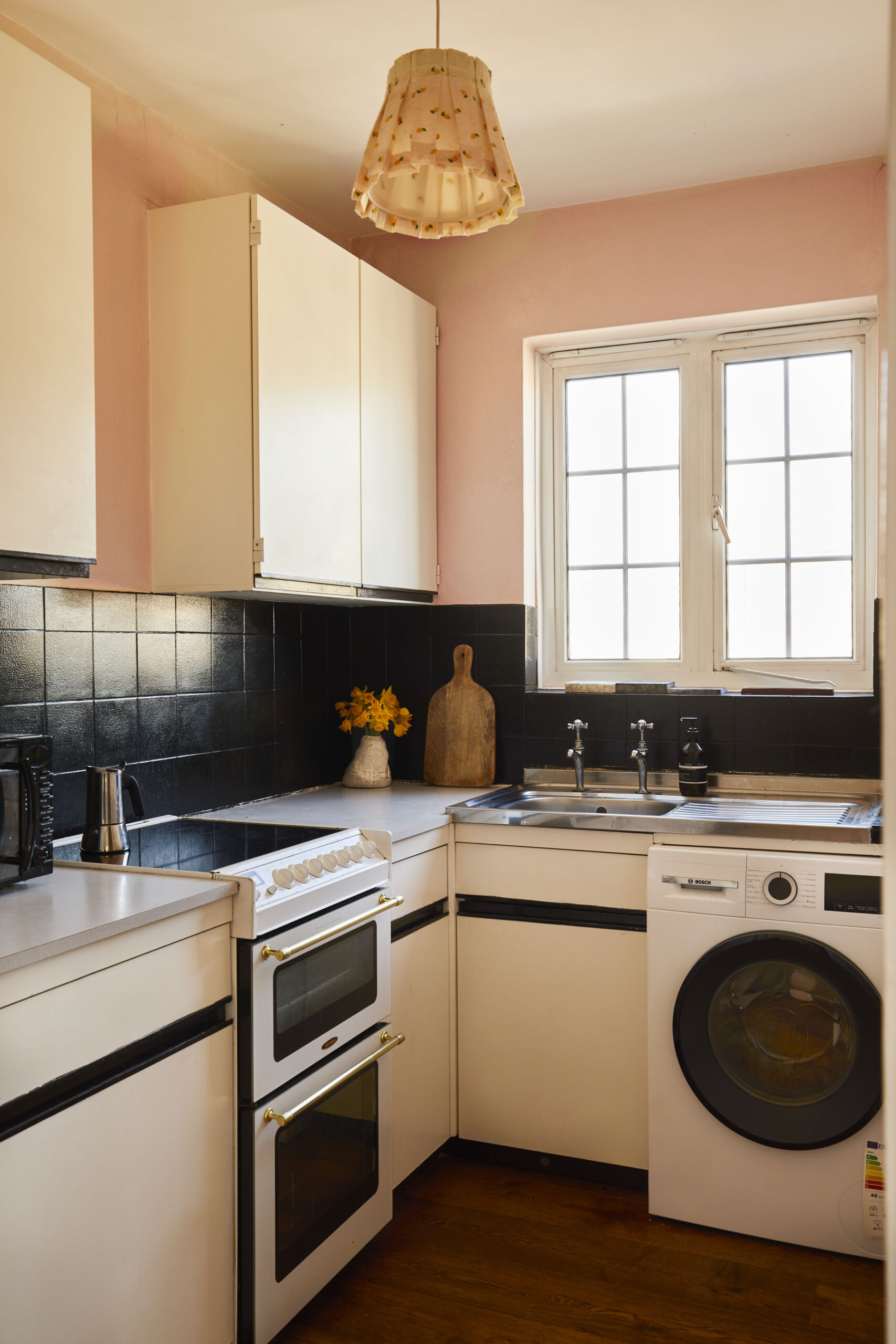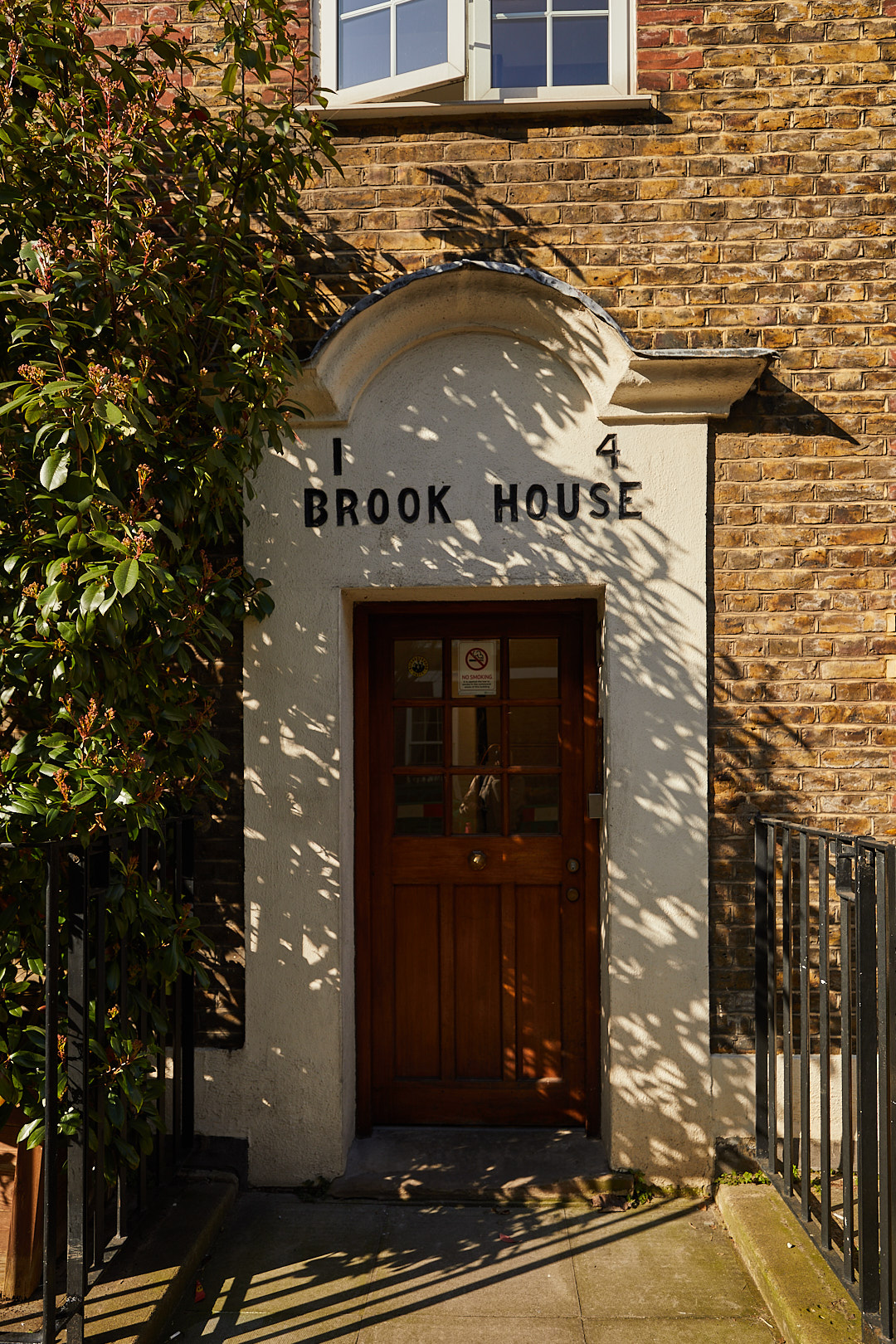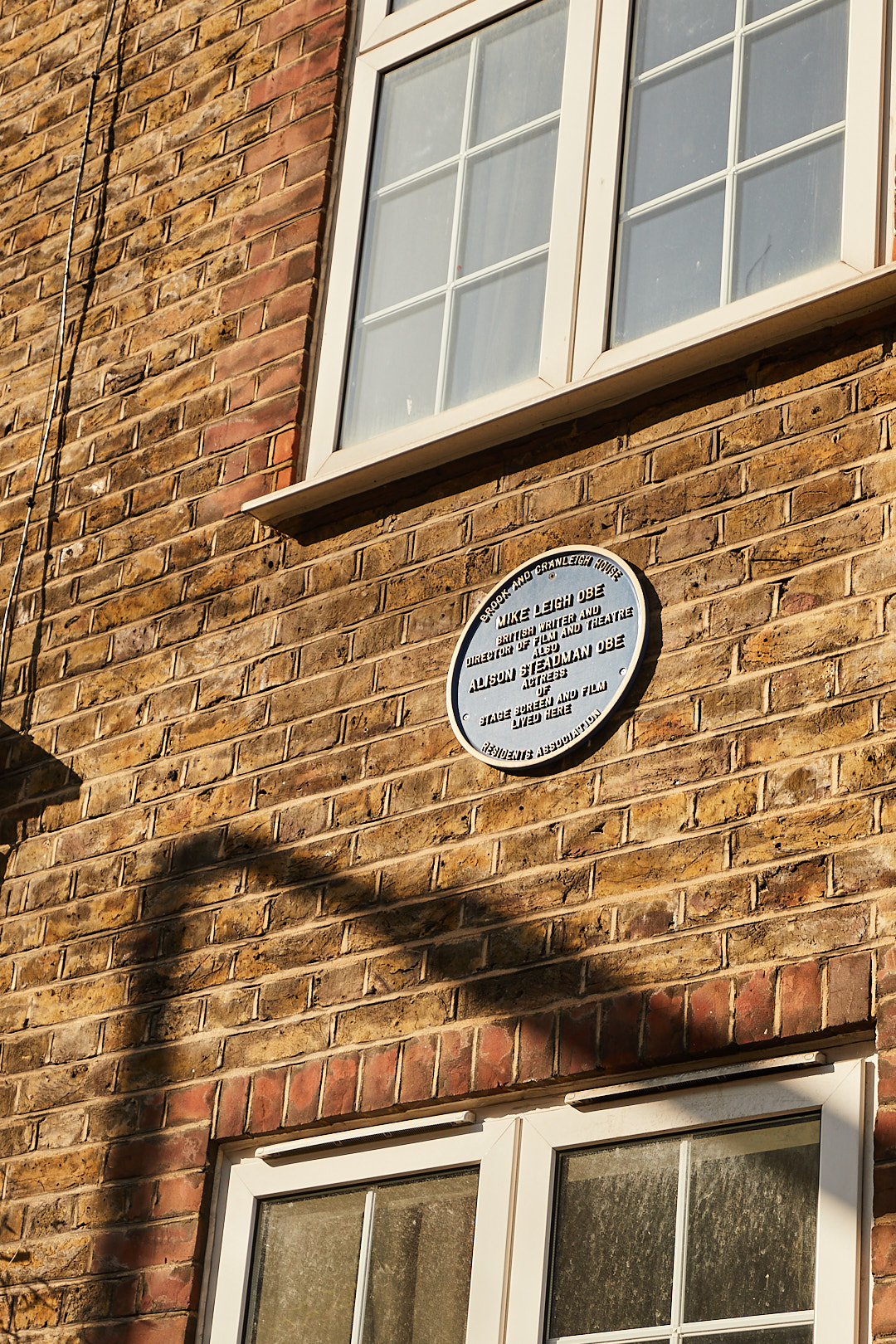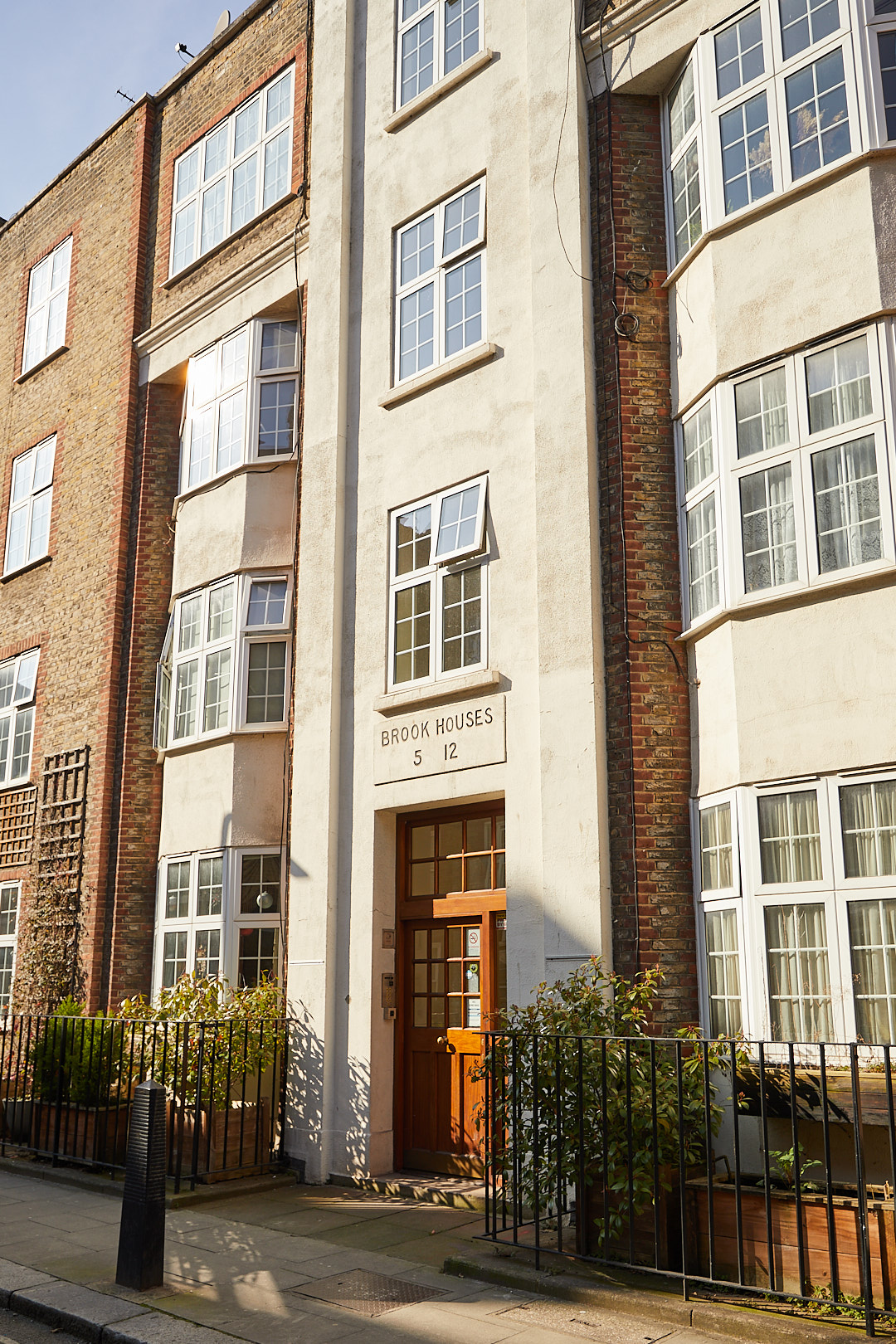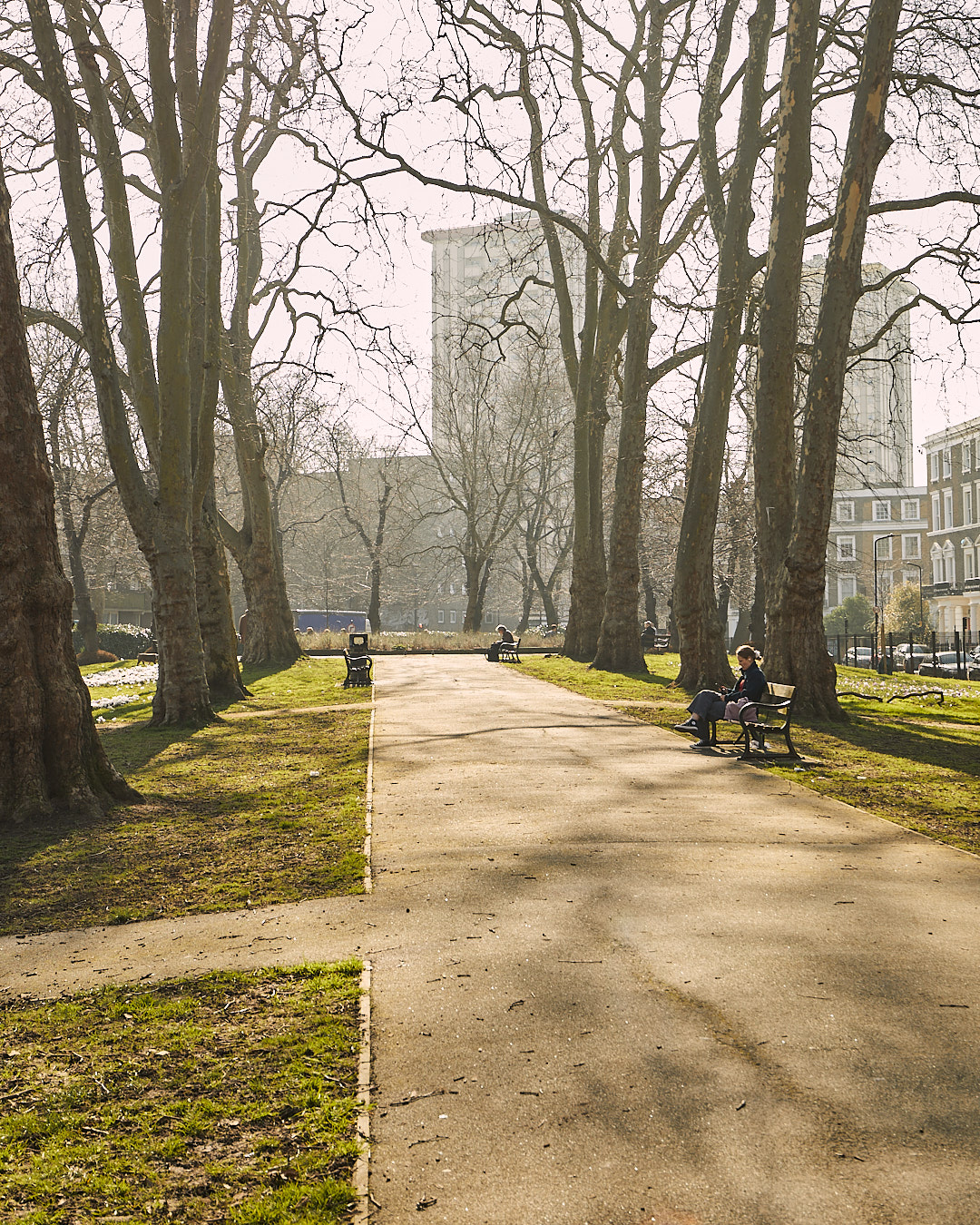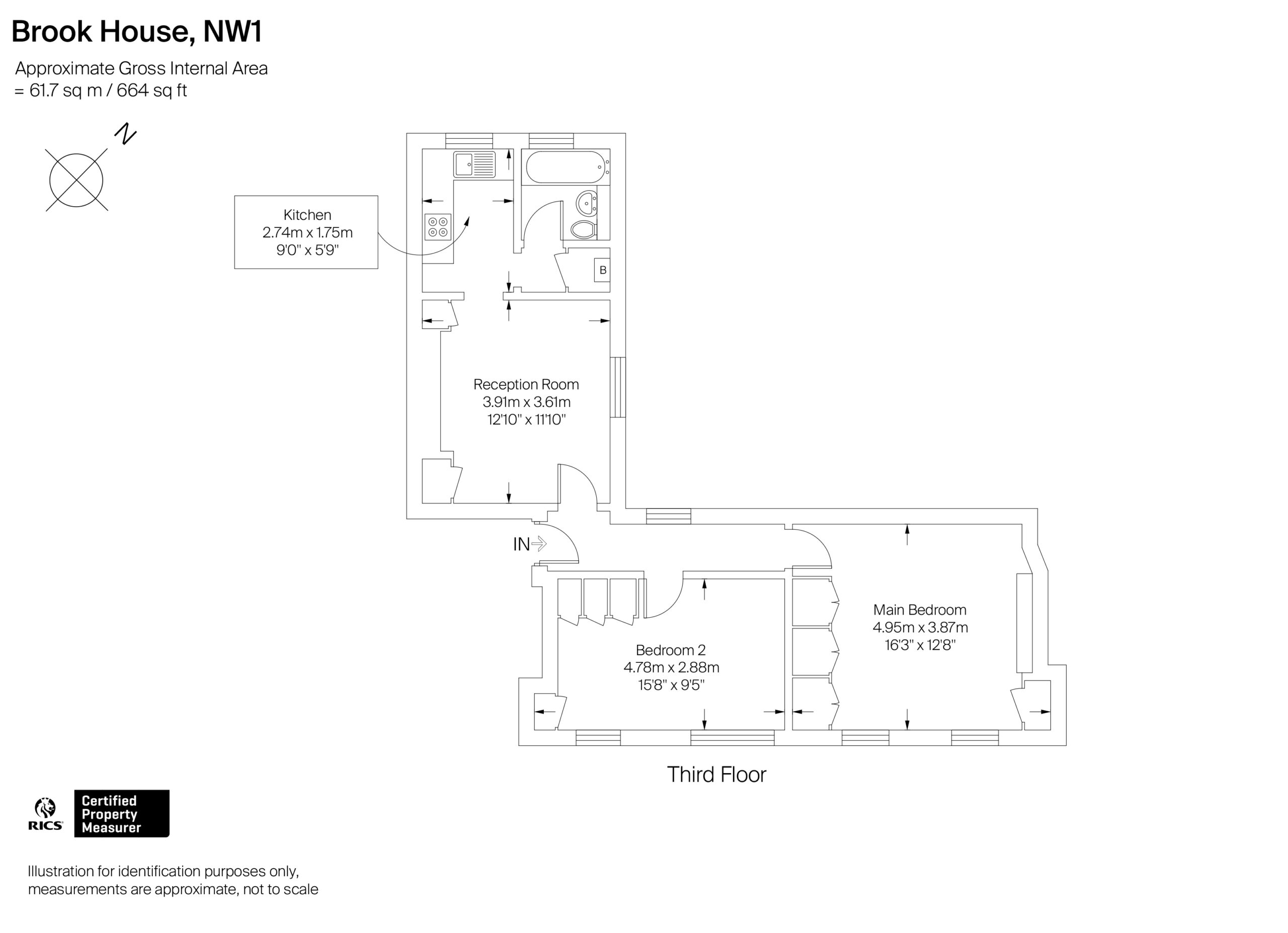A centrally located two-bedroom property within an elegant 1930s apartment block. Originally designed as well-considered social housing, the building now has the gently aged charm of early twentieth century buildings viewed from a contemporary eye. Set back from the street, a broad front door with a simple decorative pediment is bordered with shrubbery and iron railings.
Brook house itself has an intriguing literary past and a thriving present-day community. Moreover, the surrounding area is, as the Guardian writes ‘ripe with history and character’. The blue plaque on the building tells that Charles Dickens used to live in a house on the site, which later became the David Copperfield Children’s Library. When those Victorian buildings were demolished in the 1920s, Brook House and Cranleigh House were built. Another blue plaque shows that Mike Leigh and Alison Steadman later lived in the building. The many long-term residents are testimony to the friendly community of Brook House; there is a Brook House and Cranleigh House Residents’ Association, the president of which was born and raised in the building.
The interior decoration of the apartment has been well considered and expertly carried out, to create a high quality finish. This, combined with the inherently interesting historical features of the apartment, creates an atmosphere of timeless, understated elegance.
The apartment opens from a well-maintained and light-filled communal stairwell into a naturally lit hallway which is fitted with cosy but modern flooring: ‘Panama’ seagrass by Sisal & Seagrass. This neatly continues into the living room and bedrooms. To create a warming, neutral colour scheme, the walls throughout the apartment have been painted in a custom palette based on variations of Paper & Paints ‘Parsonage’ and are punctured by brass sockets and light switches. The naturalistic tones of the seagrass and the muted pink walls complement each other beautifully.
The first bedroom, off the hallway, has large windows which look out onto the street, making the room light and airy. Useful in-built bespoke storage by Holborough Studio, in a bold cobalt blue, has been fitted along one wall. The bespoke Roman blinds in a Warner House corn yellow linen are by Sinclair Window Dressings. As in all the rooms of the apartment, the first bedroom has charming original in-built wooden cabinetry, painted a fresh, classic white.
Also off the hallway, to the left, is a room used as a dining room which has a tall, handsome brick fireplace with sweet iron grate and topped with a wooden mantelpiece. Flanking the fireplace are another pair of the original wooden cabinets, in-built from floor to ceiling and painted white.
Through the dining room is a practical kitchen, kitted out in a modern, monochrome set of units and stainless steel sink. The bathroom is also very practical and modern, with a shower above the bath, surrounded by a neat glass screen and dark blue metro tiles. The taps on both the bath and basin are a cool Matt black, giving a smart feel.
The apartment is currently configured to use the second bedroom as a living room but, as in the first bedroom, it does have a wall of bespoke in-built storage by Holborough Studio and could easily be rearranged for use as a second bedroom. The two large windows, again looking out onto the street, have been finished with more bespoke window dressings, this time in a Bloomsbury-esque floral fabric. This room, along with the rest of the rooms in the apartment, has a picture rail, above which is painted white, giving an air of tradition and sophistication. The apartment also benefits from a secure external storage space.
A recent arrival on the popular radar, Somers town is described by the Guardian as ‘one of London’s best kept secrets’. The area is favoured for its centrality, being close to Camden and just an 8 minute walk from both Euston and Kings Cross stations. The British Library, Coal Drops Yard and the whole new development of Kings Cross are close to hand.
It also has interesting sites of social history, such as the ‘magnificent’ 1920s Ossulston Estate. Going back further into the mists of time, we find the ‘spooky’ St Pancras Old Church, to which Thomas Hardy, when he was a young architect, moved graves to make way for the new railway station. Cranleigh Road is a stone’s throw from the pleasant green spaces of Harrington Square gardens and Oakley Square Gardens and the immediate area is increasingly well served by a niche selection of independent shops, pubs and cafes.
